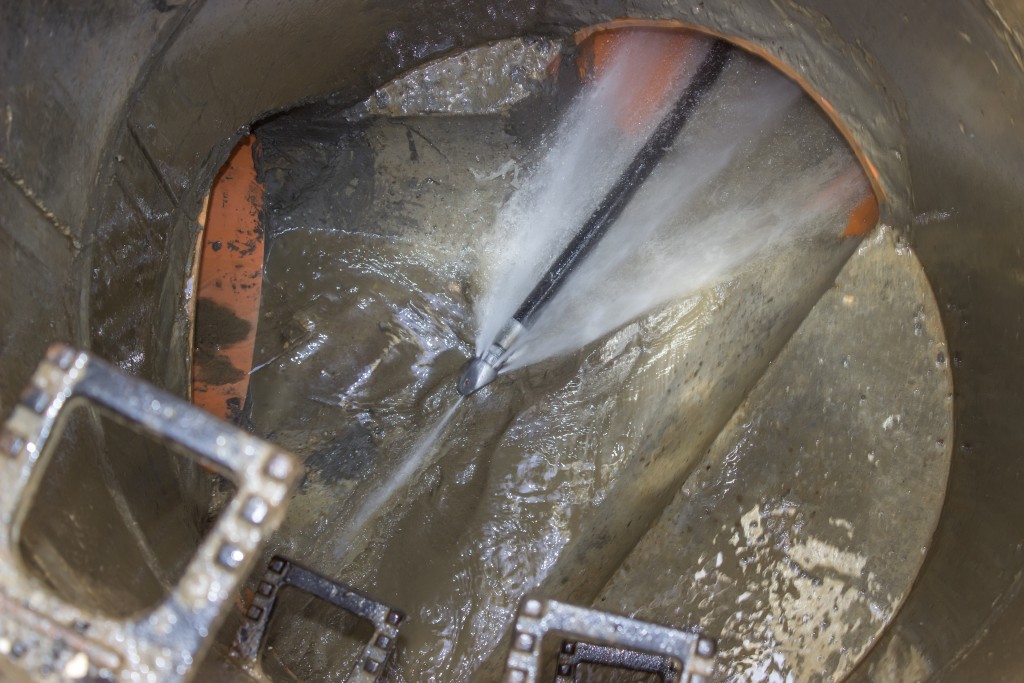Ever wonder why welding stainless steel produces white frosting or marks on the surface? These white marks are often acid residue that hasn’t been fully neutralized during weld cleanup. They are signs that the metal surface has an increased concentration of an acidic substance.
If you don’t remove the acid residue, they’ll combine with contaminants in the air and form phosphate salt crystals. These crystals are difficult to remove and make the surface of the metal look powdery.
Such surface imperfections affect the appearance of your stainless steel structures. If you want your stainless steel welds to look smooth and polished, you can apply one of these three techniques:
1. Neutralization
Neutralization requires specialized neutralizing fluids, which is then applied to the metal’s surface with a sprayer. The goal of this process to counteract the acid present on the stainless steel component, restoring its acid-neutral state.
Remember to purchase the right neutralizing fluid for the job. The variants have different concentrations, ideal applications, and storage requirements, so you want to choose one that meets your requirements.
Process
The proper neutralization process starts by cleaning the weld using a brush and a weld cleaning acid. Then, wipe away the excess acid immediately after cleaning the metal to make it easier to neutralize.
Make sure to apply the neutralizing fluid using a spray bottle. Some people prefer to apply some fluid onto a cloth then use it to wipe down the metal’s surface. However, this method doesn’t spread the neutralizer evenly, leaving some spots left untreated.
Afterward, wipe the surface dry using a clean cloth. Don’t use the same one as before because it already has acid residue.
2. Electropolishing
Electropolishing is a stainless steel finishing technique that involves submerging the parts in a temperature-controlled bath. An electric current then passes through the bath to oxidize the metal’s surface, removing a microscopic layer of contaminants and imperfections. It also eliminates discoloration, heat tints, and white frosting caused by the welding process.
This finishing method produces a smoother, shinier, and brighter surface. This is why electropolishing is popular among industries with critical cosmetic requirements, such as aerospace and medical device manufacturing.
Process
You can perform electropolishing at home using a standard bench power supply and a polishing wand. First, look for a power supply that puts out 30V 5A, preferably one with a digital voltage and current display and current limit control.
Connect one end of the power supply to the metal you’re finishing, then the other to a polishing wand. You can fashion a wand using a metal electrode wrapped in a cloth, which will hold the electrolyte liquid. Then, wrap the electrode in a thin layer of fiberglass tape.
You want the electrode at a negative voltage. The power supply only puts out positive voltage, so you have to swap the connectors. To start polishing, clip the ground clip to the piece you’re working on. Dip the wand in electrolyte then lightly touch it to the areas you want to polish.
You have to tweak the current control to achieve the level of conductivity you want.
3. Pickling
Pickling is another metal surface treatment that involves submerging metals in an acid bath. It’s usually done as a preparatory step before electropolishing and passivation to make the metal’s surface even smoother.
This process removes surface impurities including stains, discoloration, and white scales caused by the welding process.
Because pickling uses harmful substances like hydrofluoric acid and nitric acid, we don’t encourage doing this process on your own. It’s better left to specialists with expert knowledge and experience with pickling.
Pickling can also be done using pastes instead of baths. However, this application manner is risky, too. Exposure to pickling paste fumes can cause health complications like lung injuries.
If you’re planning to clean stainless steel welds on your own, your best options are mechanical methods like electropolishing and neutralization.
Note that neutralization is most effective when you do it right after welding. This way, you can remove the acid residue before it alters the appearance of your stainless steel component. If the white marks on the surface are too tough for your neutralizing fluid, that’s when you opt for electropolishing.
Don’t forget to wear your safety glasses, rubber gloves, respirator mask, and welding jacket before you try electropolishing!
If you’re not keen on figuring out the problem on your own, you can always seek help from a weld cleaning services provider. This way, you can ensure that the post-weld clean is properly and safely done. Plus, you can be sure that your stainless steel component will come out looking smoother and shinier.
